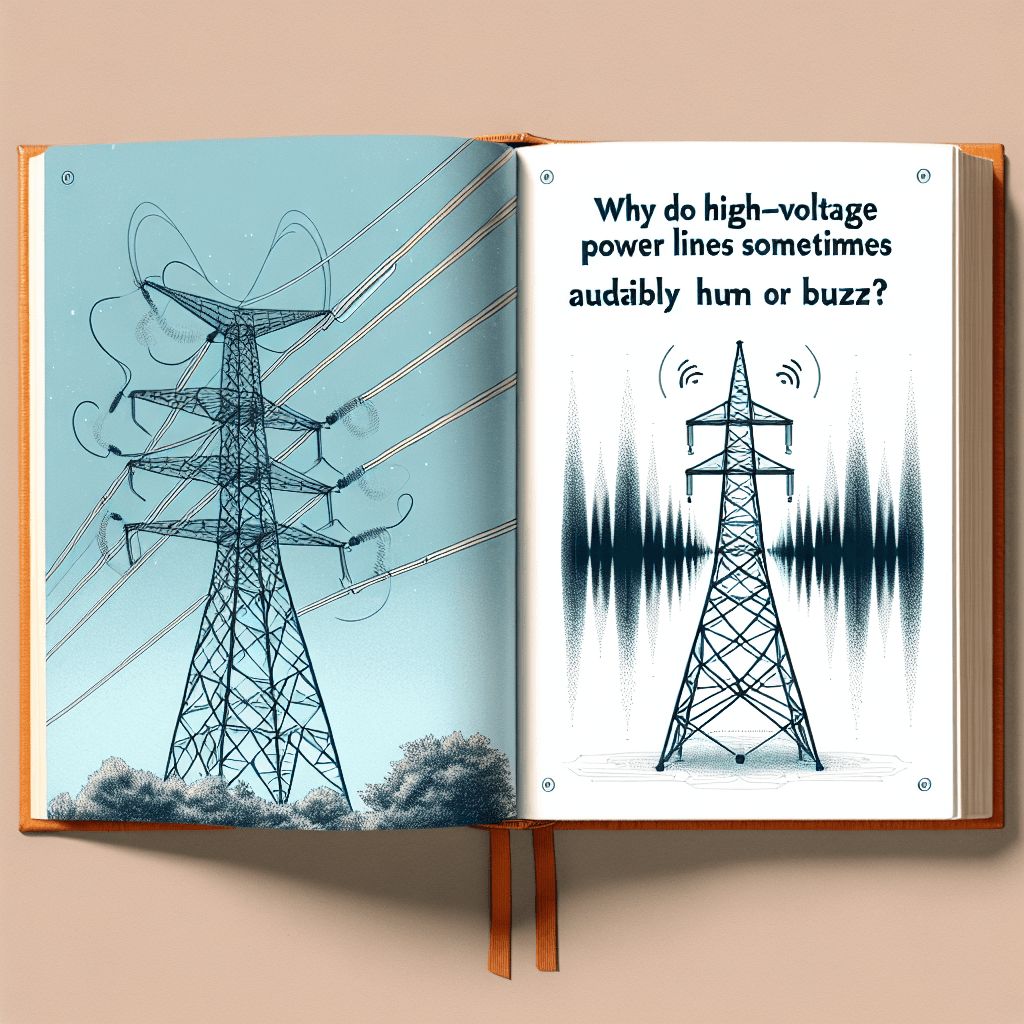Why do high-voltage power lines sometimes audibly hum or buzz
That eerie buzz isn't the sound of electricity itself, but the sound of the air around the wire being electrified into a tiny, continuous lightning storm known as a corona discharge.


Too Long; Didn't Read
TLDR: The buzzing is from corona discharge, where the high voltage ionizes the air around the wires, which is worse in damp weather. A deeper hum can also be caused by the physical vibration of the lines from the alternating current.
The Sound of Power: Why Do High-Voltage Power Lines Sometimes Audibly Hum or Buzz?
Have you ever walked beneath a large transmission tower, especially on a damp, foggy day, and noticed a distinct humming or crackling sound coming from the wires overhead? It’s an eerie, electric sound that seems to fill the air. This isn't just your imagination; it’s a real and well-understood physical phenomenon. While it might sound alarming, this buzzing is a normal byproduct of transmitting immense amounts of electrical energy across vast distances. This post will demystify that sound, explaining the science behind why those high-voltage lines hum and why the noise is often more noticeable in certain weather conditions.
The Primary Culprit: Corona Discharge
The main reason for the buzzing and crackling sound is a phenomenon known as corona discharge. In simple terms, corona discharge is the ionization of the air immediately surrounding a high-voltage conductor.
The electric field around a high-voltage power line is incredibly intense. This field is strong enough to strip electrons from the atoms in the surrounding air (mostly nitrogen and oxygen), creating a plasma, or a region of charged particles (ions). As these newly freed electrons and ions are accelerated by the electric field, they collide with other air molecules. These tiny, constant collisions create small electrical sparks and vibrations in the air. When millions of these microscopic events happen at once, they produce the cumulative sound we perceive as a hum, buzz, or crackle.
You can think of it as a collection of countless microscopic lightning bolts occurring continuously around the wire. In fact, if you look closely at a power line at night under the right conditions, you might even see a faint violet glow around the conductors—this is the visible light produced by the corona discharge.
Why Weather Makes It Louder
If you’ve noticed that the humming is much more pronounced during rain, fog, or high humidity, you’re onto a key factor. Weather plays a significant role in the intensity of corona discharge.
Dry air is a fairly good electrical insulator. However, water is much more conductive. When the air is humid or it's raining, tiny water droplets collect on the surface of the power lines. This has two major effects:
- Increased Conductivity: The moisture makes the air around the conductor more conductive, making it easier for the electrical charge to "leak" into the air and initiate the corona effect.
- Irregular Surfaces: Water droplets, insects, or bits of dirt on the line create points and sharp edges. Electric fields are most concentrated at sharp points. These irregularities intensify the local electric field, dramatically increasing corona discharge at those spots and, consequently, making the sound much louder.
This is why a line that is nearly silent on a dry, sunny day can produce a significant buzz during a morning fog or a light drizzle.
The Steady Hum of Alternating Current (AC)
Besides the crackling of corona discharge, there's often a deeper, more constant hum. This sound is directly related to the nature of the electricity being transmitted. Power grids use Alternating Current (AC), where the flow of electricity rapidly changes direction. In North America, the standard frequency is 60 Hertz (Hz), meaning the current reverses direction 120 times every second.
This rapid oscillation of the electric field causes the corona discharge effect to pulse at twice the line frequency (120 Hz). This vibration creates a low-pitched, steady hum that provides a constant baseline sound, while the more random crackles from corona discharge are layered on top. This is the same fundamental frequency you might hear from large transformers in a substation.
Conclusion: The Normal Sounds of Our Power Grid
So, the next time you hear that electric hum from a power line, you can be confident it isn't a sign of danger. It is the audible evidence of physics in action—the sound of an intense electric field interacting with the air itself. This corona discharge, amplified by moisture and driven by the steady pulse of alternating current, is a normal, albeit inefficient, part of high-voltage power transmission. Utility companies work to minimize it through clever engineering, like using bundled conductors to reduce the intensity of the electric field. That buzzing sound is simply the voice of the immense energy that powers our modern world on its journey to our homes and businesses.
More Articles

What creates the warm crackle sound unique to vinyl records?
That iconic warm crackle is more than just dust and nostalgia—it's the sound of a microscopic story of friction and physics being told in real-time.

Why do some insects build and wear a backpack made from the corpses of their victims?
For some of nature's tiniest predators, the best defense is a grisly offense—building a protective shield from the corpses of their vanquished prey.

Why are Earth's deserts not random, but aligned in two distinct belts?
It’s not a coincidence that the world's great deserts are aligned in two perfect bands; they are the direct creation of massive, invisible rivers of air that perpetually circle the globe.